The Eolienne Bollée is a type of windmill invented by Ernest-Sylvain Bollée (1814-1891) which operated as a water pump. It was produced in France from 1872 to 1933, with around 350 windmills being made, which were installed mainly in France, in 44 departéments (counties). There are about 80 still extant.
A fully restored Eolienne Bollée, at Esvres sur Indre.
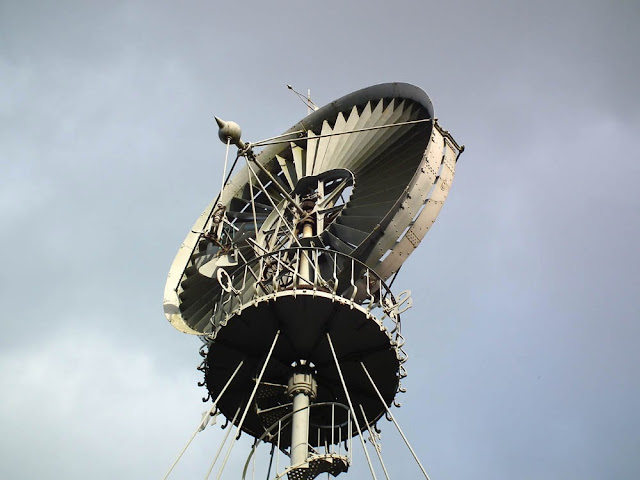 |
Ernest-Sylvain Bollée used the word 'éolienne' for the first time in 1885 as a noun and not as an adjective ('énergie éolienne'). The word first appeared in the dictionary (Larousse) some years later, in 1907.
The Eolienne Bollée in the grounds of the Chateau de la Bourdaisiere.
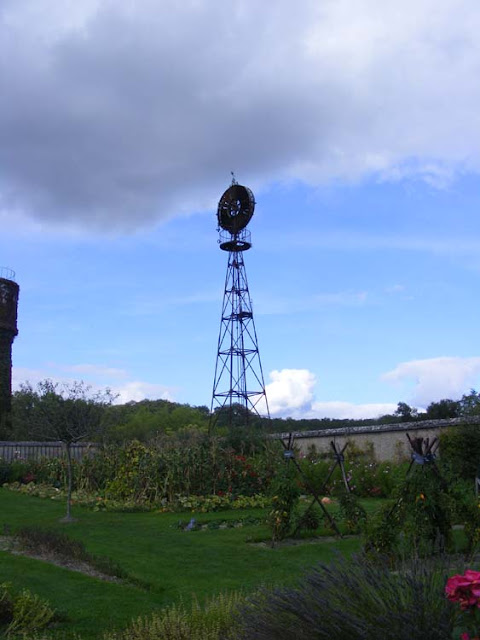 |
There were several inventors and industrialists in the Bollée family (foundry owners, automobile manufacturers) over several generations. In 1857 Ernest-Sylvain Bollée patented a hydraulic ram (Fr. bélier hydraulique), in 1868 a wind turbine, and in 1885 his son Auguste-Sylvain Bollée patented a wind funnel.
The remains of an Eolienne Bollée and pump shed in the grounds of the Chateau de Nitray. The wind turbine has been converted to a windsock, as a previous owner designed and manufactured light planes.
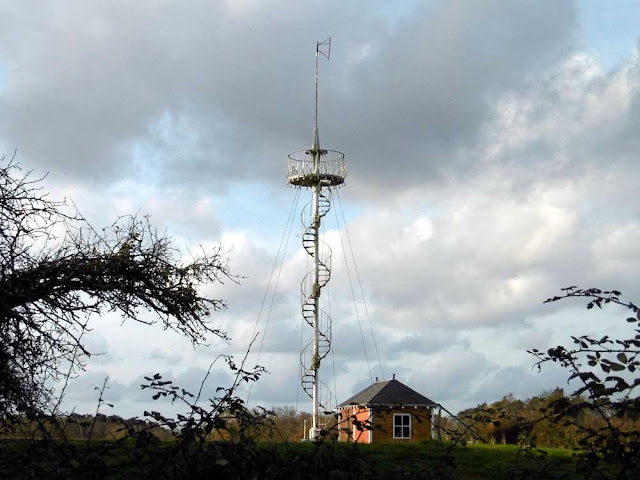 |
The company manufacturing the wind turbines was owned by the Bollée family from 1872 to 1898. After the death of his father Auguste-Sylvain Bollée (1847-1906) withdrew to an apartment in Paris to paint, and finally sold the business in 1898 to Edouard-Emile Lebert. He presented the wind turbine at the Exposition Universelle (World's Fair) in Paris in 1900 and it became a commercial success. Edouard-Emile Lebert sold the business in 1918 to Gaston Duplay and in 1926 it became the Société anonyme des Eoliennes Bollée.
The Eolienne Bollée at the agricultural high school at Amboise.
This is the only one which is heritage listed.
Of the 352 Eoliennes Bollée identified, 65 were installed in Indre et Loire, 42 in Sarthe, 26 in Yonne, 18 in Loir et Cher and 17 in Maine et Loire.
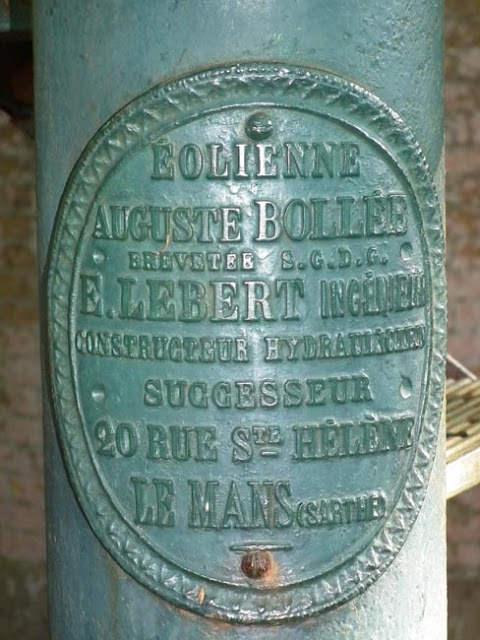 |
| The manufacturers plate on the Eolienne Bollée in the grounds of the Hotel Domaine des Hauts de Loire, just outside Onzain. |
Some technical details, translated from Wikipedia:
In his 1868 patent, Ernest-Sylvain Bollée claimed the use of a fixed "steering" wheel fitted with curved blades designed to direct the air streams perpendicular to the plane of each blade of the drive wheel located behind and on the same horizontal axis, "so as to impart motion more directly to the latter". The drive wheel controls the transmission by means of a bevel gear, and to compensate for the reaction of the drive torque, which prevents the drive wheel "from remaining completely perpendicular to the direction of the wind current", Ernest-Sylvain Bollée off-centers its horizontal axis of rotation in relation to the vertical axis of orientation. The entire drive unit is pivot-mounted on a needle at the end of a large guyed column. A spiral staircase extending around the cast-iron column provides access to a platform above and adjacent to which are the steering and drive wheels, the mill-steering mechanism and the upper bevel gear housing.
Subsequent changes were adopted:
- Ernest-Sylvain Bollée replaced the steering vane with a "Delamolère" steering reel.
- The vertical transmission shaft was routed inside the column.
- Under the 1885 patent, Auguste-Sylvain Bollée installed a funnel system around the periphery of the steering wheel to capture a greater quantity of air, thereby increasing the mill's speed and power. A half-sphere on the hub completed the arrangement.
- The original chain-and-bucket water lift was replaced by a pump.
- From 1898 onwards, Lebert adopted a lattice tower to replace the guyed Bollée column. At the same time, the spiral staircase was replaced by a simple ladder.
The pump shed at the Domaine des Hauts de Loire,
connected to the wind turbine by a drive shaft on the left.
There were different sized Eoliennes Bollée, designed to perform in different circumstances. Type one was the smallest and placed on an open high spot away from trees and buildings. Type two was often placed in a woodland and care had to be taken that it overtopped the trees. Type three was the larger model, suitable for installation in a valley. There was a fourth, even bigger model, but it doesn't seem to have been used much.

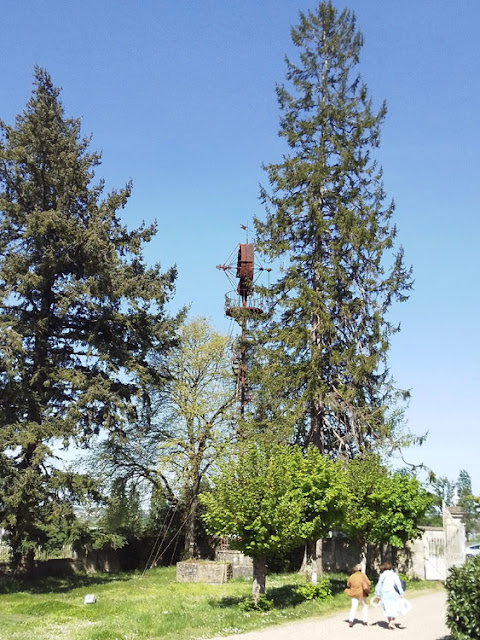
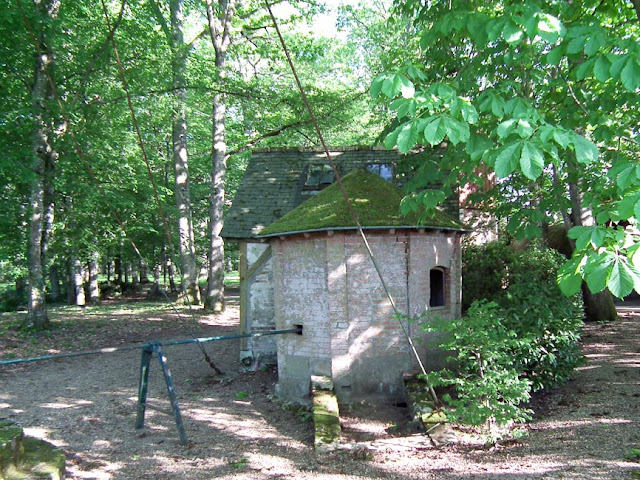
No comments:
Post a Comment